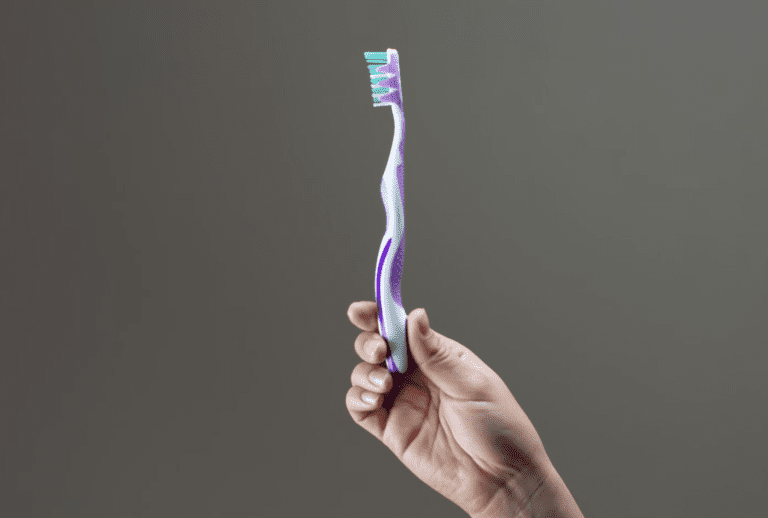Plastics are all around us. Despite the fact that Greenpeace hardliners want to ban them, along with the oil industry that fuels ships, plastics have changed our lives by allowing us to fly planes, conserve and store water, and produce clothes and everyday products cheap and effective. But there is a cost as plastics do not biodegrade, most plastics are not recycled and can enter the food chain and our bodies in small, invisible pieces known as microplastics. Scientists are finding microplastics in water, in dust, in bits cut off from plastic bottles we drink from – and now the obvious – from brushing our teeth. (Scroll down if you’re looking for the study on plastic mouth retainers).
microplastics, according to the NIH in the UScan affect the human body by stimulating the release of endocrine disruptors. Microplastics can carry other toxic chemicals such as heavy metals and organic pollutants during adsorption, which can adversely affect the human body.
In a new study by dental researchers in India and published in the journal Environmental Pollution, researchers looked at the impact of using plastic toothbrushes and microplastics. Brushing your teeth is hard, no doubt about it, and plastics should definitely be crushed by toothbrushes. Is it time for natural bristles and the miswak stick, used in Africa and Arab countries as a natural toothbrush?
Miswak is a tooth cleaning twig made from Salvadora Persica tree. It shows antibacterial activity that can help control the formation and activity of dental plaque.


Do you brush your teeth with a stick from a tree? It is called miswak. Find them for sale in African markets.
Indian researchers from the Meenakshi Ammal Dental College and Hospital explain that “the environmental input of microplastics from personal care products has received considerable attention. However, less focus has been placed on oral care products.’
They looked at microplastics in commercially available oral care products such as toothbrushes, toothpastes, mouthwashes, dental floss and mouth deodorants distributed in India.
All products showed microplastic contamination, with toothbrushes showing the highest particles (30 to 120 particles/brush) and deodorant mouth sprays (0.2-3.5 particles/ml) having the lowest abundance, they report.
Fragments, fibers, beads and films were the various shapes of microplastics observed, with fragments (60%) being predominant. Different colors such as pink, green, blue, yellow, black and colorless fragments were observed, where colorless (40%) particles predominated.
Microplastics were categorized into three sizes: <0,1 mm (63%), 0,1-0,3 mm (35%) και >0.3 mm (2%).
Four main types of polymers such as polyethylene (52%), polyamide (30%), polyethylene terephthalate (15%) and polybutylene terephthalate (3%).
Researchers are calling for deeper research into microplastics and oral health. Which got me thinking after my daughter wore Invisalign plastic liners for a year to correct a small overnite:
Are there microplastics that reject plastic aligners?


Microplastics and orthodontic plastic aligners. No danger?
A 2023 study that simulated the oral environment in the lab found yes, microplastics were separated from clear orthodontic aligners. They looked at the top brands of plastic aligners and compared them: “This in vitro study highlighted for the first time the detachment of microplastics from clear aligners due to mechanical friction. This evidence may represent a major concern in clinical practice, as it could affect the general health of the person,” the researchers wrote.
They examined orthodontic transparent aligners from different manufacturers: Alleo (AL); FlexiLiner (FL); F22 Aligner (F22); Invisalign (INV); Lineo (LIN); Arc Angel (ARC) and Ortobel Aligner (OR). For each group, two aligners were immersed in artificial saliva for 7 days and agitated for 5 h/day, simulating normal mechanical tooth friction.
After 7 days, the artificial saliva was filtered. The filters were then analyzed by Raman microspectroscopy (RMS) and Scanning Electron Microscopy (SEM), respectively, to chemically identify the polymeric matrix and to measure the number and size of microplastics detected.
The results: the AL, FL, LIN, ARC and OR aligners were made of polyethylene terephthalate, while the F22 and INV were made of polyurethane. SEM analysis showed that the highest number of MPs was found in Arc Angel and the lowest in Invisalign (p < 0.05).


Avoid microplastics and buy a wooden toothbrush made from natural fibers
Related: Do Your Cosmetics Contain Cancer-Causing Asbestos?
These studies predict community health risks associated with microplastics in oral care products. Using a wooden toothbrush with natural bristles can help.
Is it time to go back to metal braces? We can’t say. We’ll wait for more research, but you might want to get this research in your hands and –– in your mouth.


Keywords: Annual exhibition on microplastics. Daily emission of microplastics. Microplastics? Mitigation measures? Oral hygiene products. Polymer Hazard Index.


